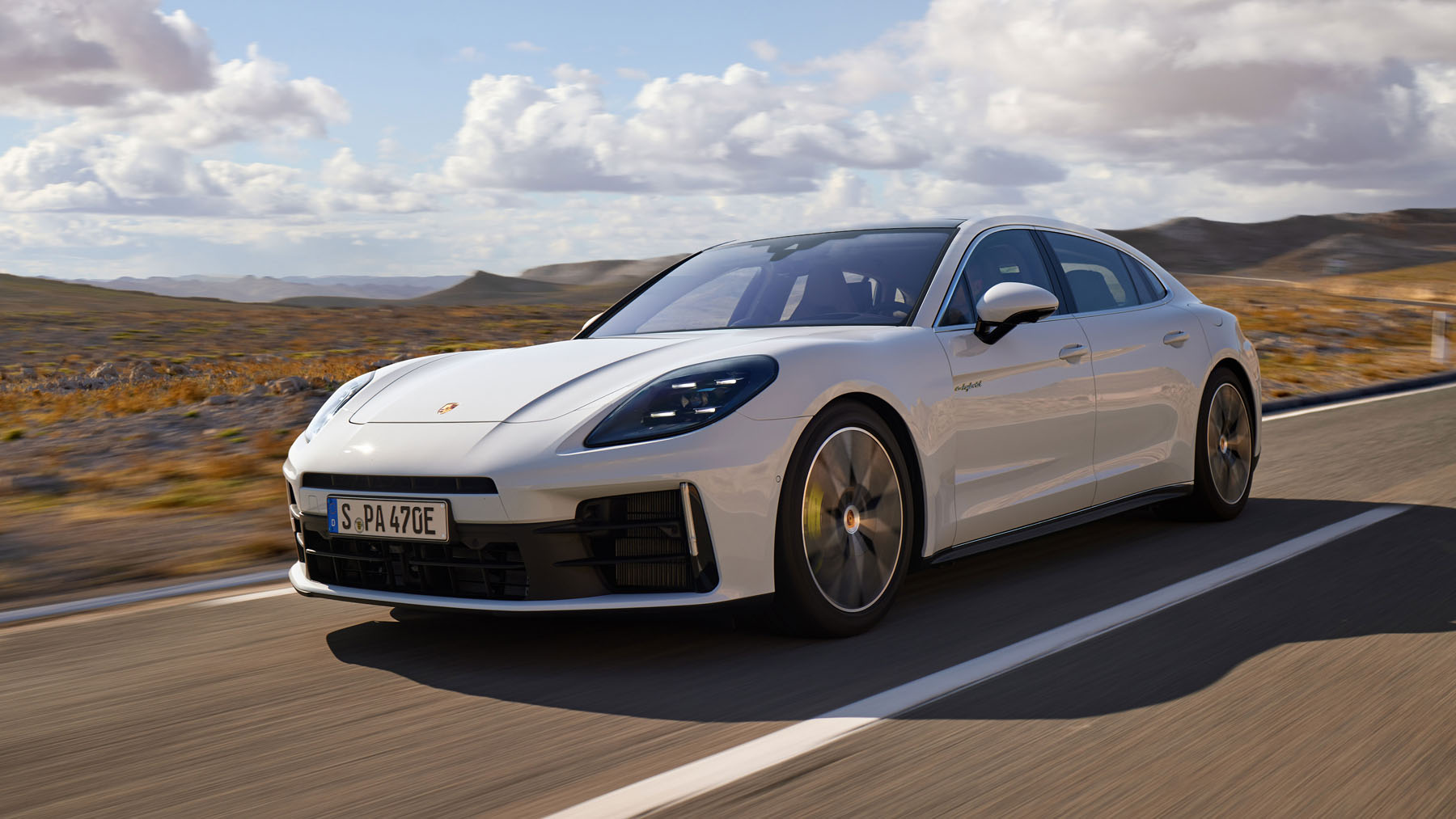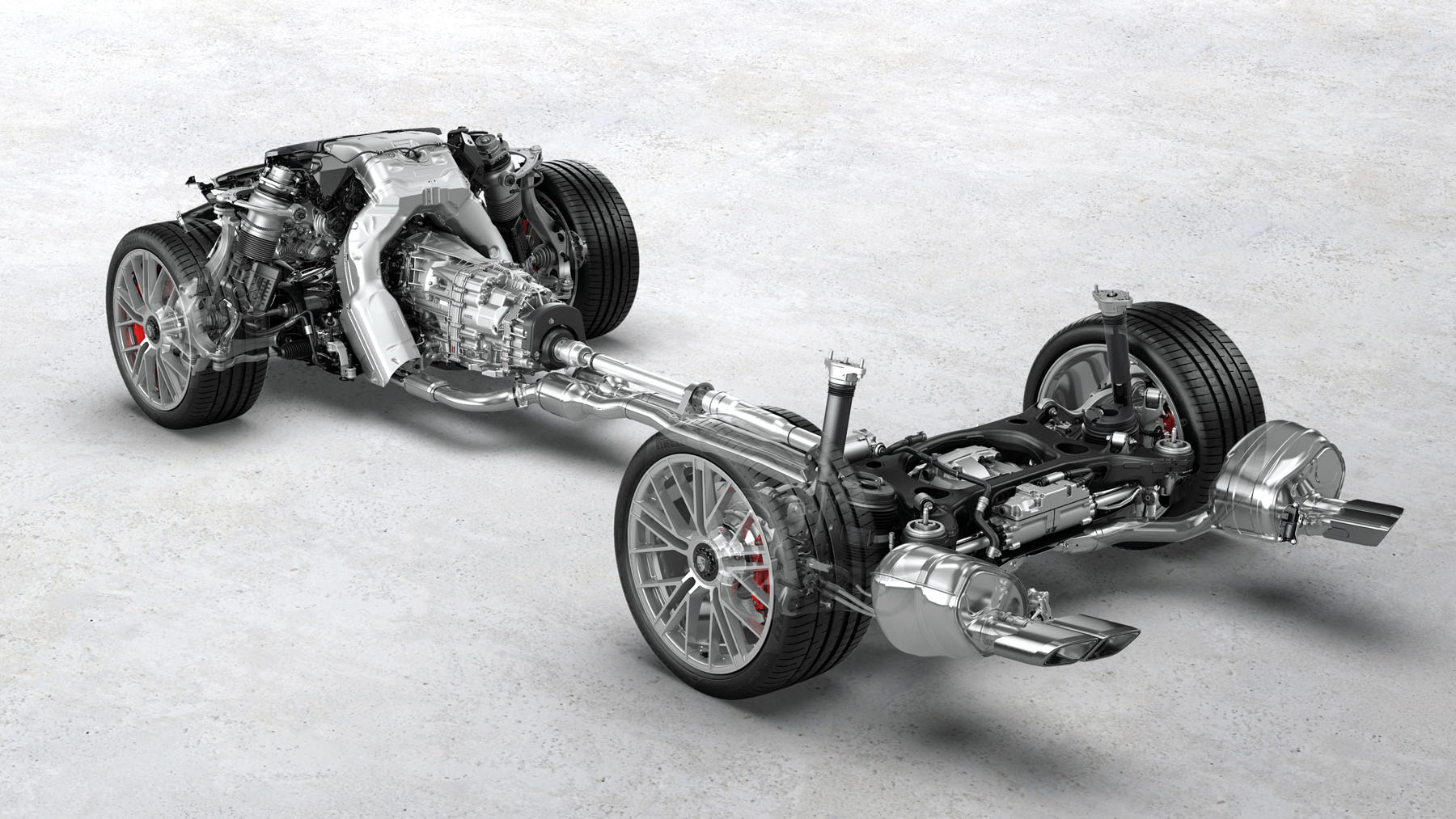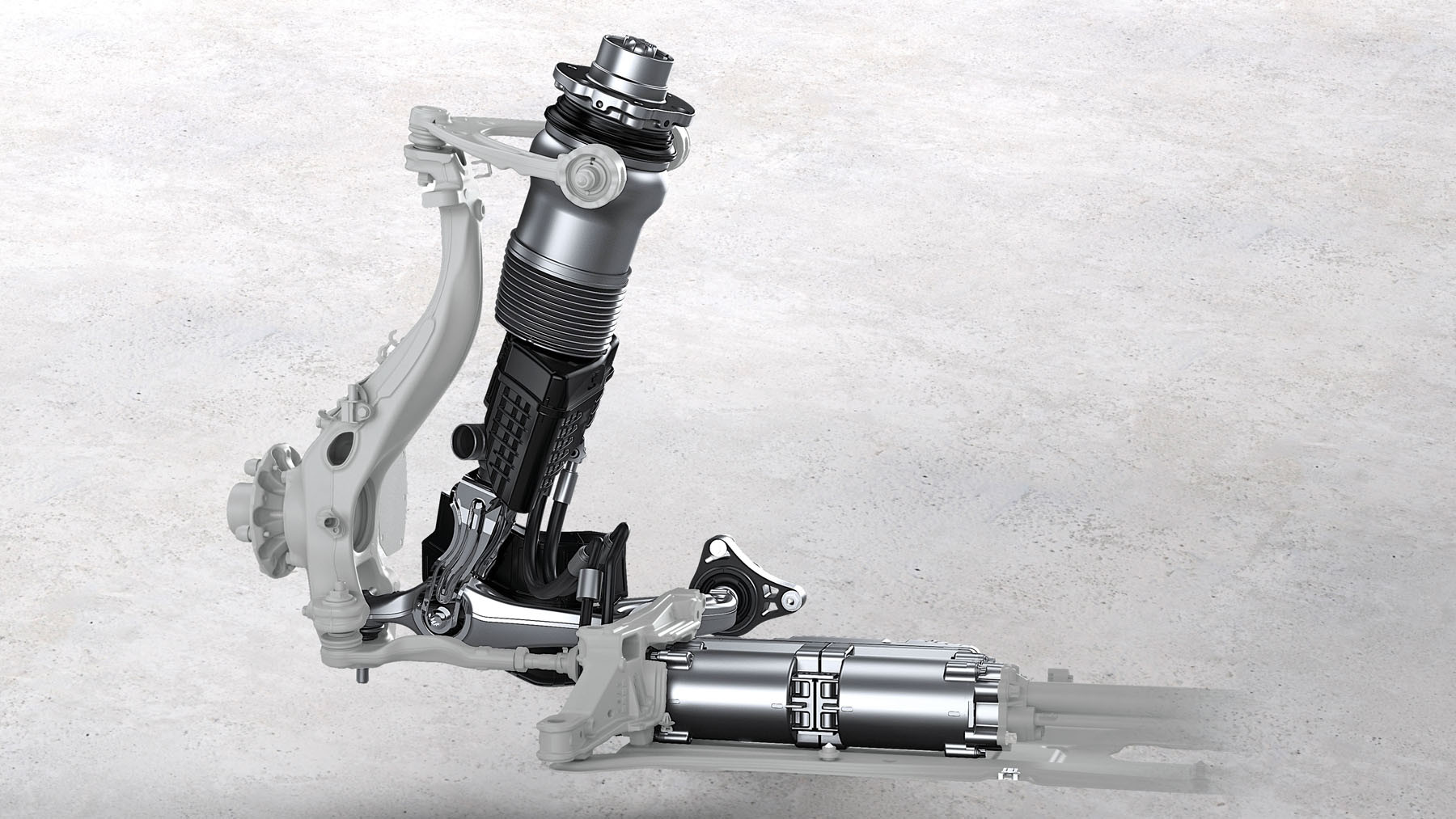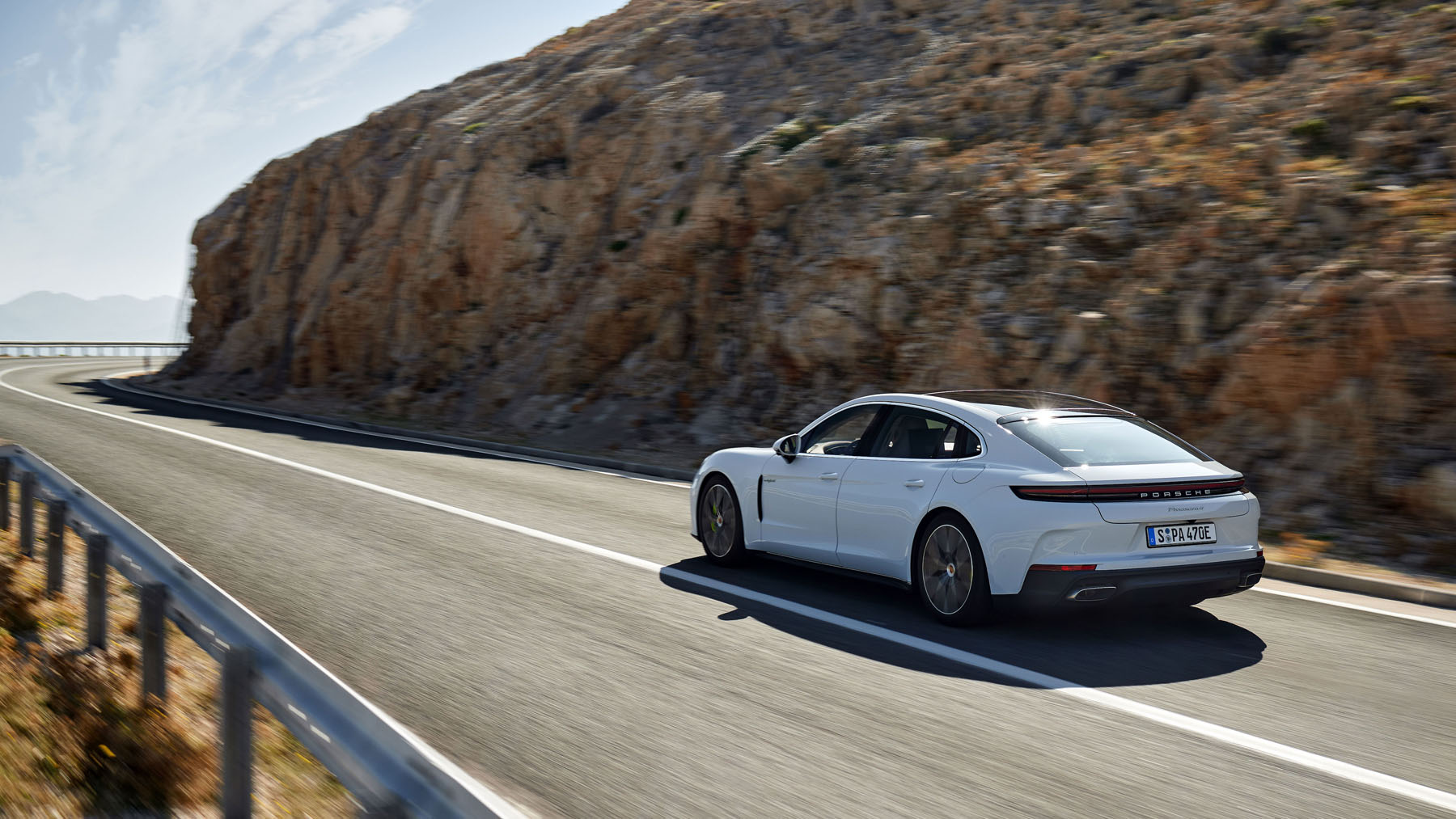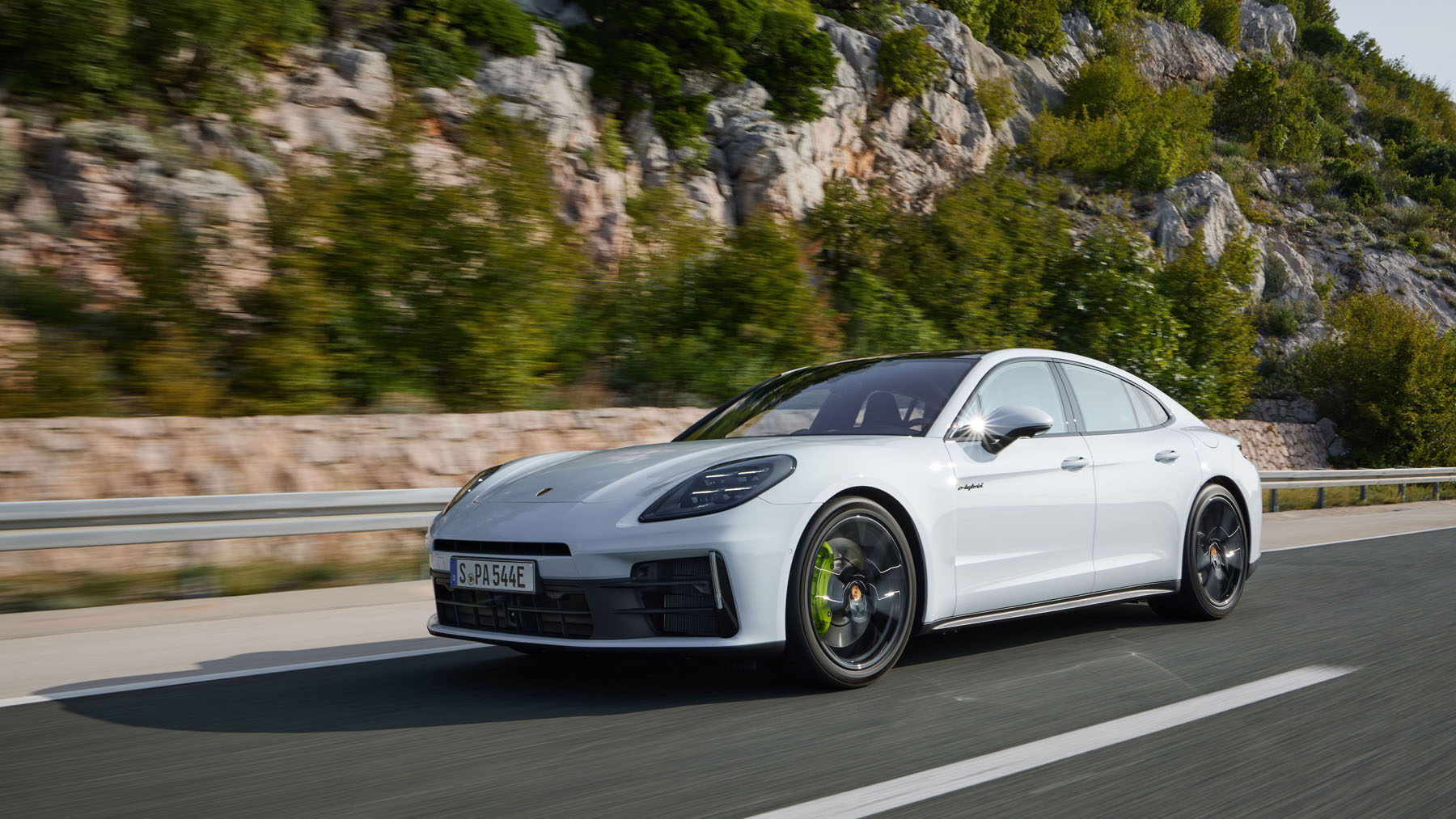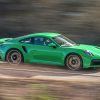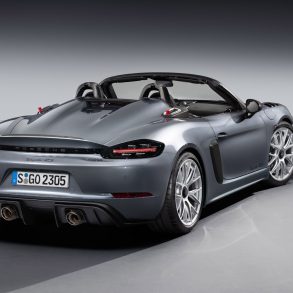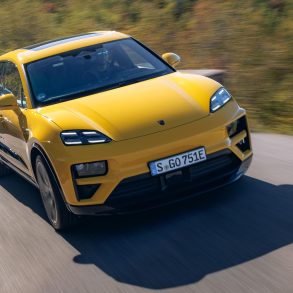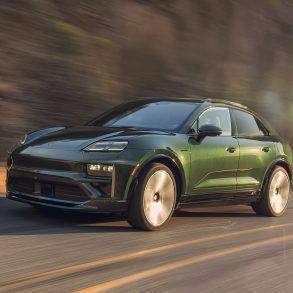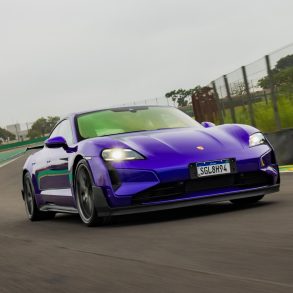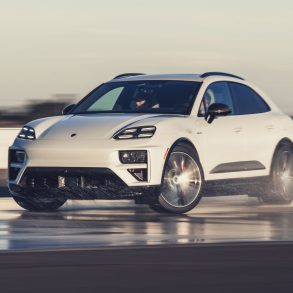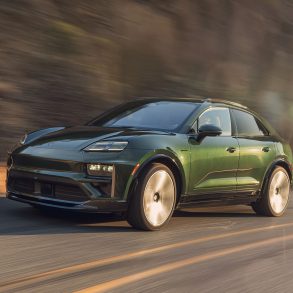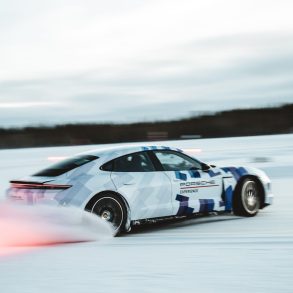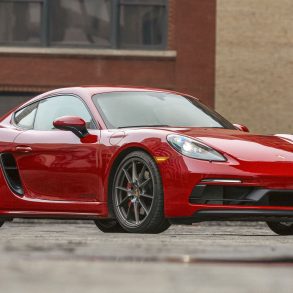The new Panamera is both a sports car and a touring sedan – and thanks to the new Porsche Active Ride chassis, it offers a driving experience that sets new standards. Sports car and touring sedan, agility plus comfort – this is the goal of the Porsche Panamera. When it comes to chassis development, this poses a challenge, as the development goals of optimum traction and high-performance cornering are at odds with driving comfort, and vice versa.
Performance vs. Comfort
This trade-off is resolved in the new Panamera with the optional Porsche Active Ride chassis. Porsche spent six years working on the system that enables the new Panamera to adapt to any road situation. It balances out road imperfections by isolating them. At the same time, it aims to offer an especially involving driving experience by establishing intimate contact with the road. “The vehicle boasts composed body control – but nevertheless remains agile on the racetrack,” explains Ingo Albers, Head of Drive Systems at Porsche. The design varies depending on the driving mode (Normal, Sport, and Sport Plus), but the system’s benefits come to bear in all three modes.
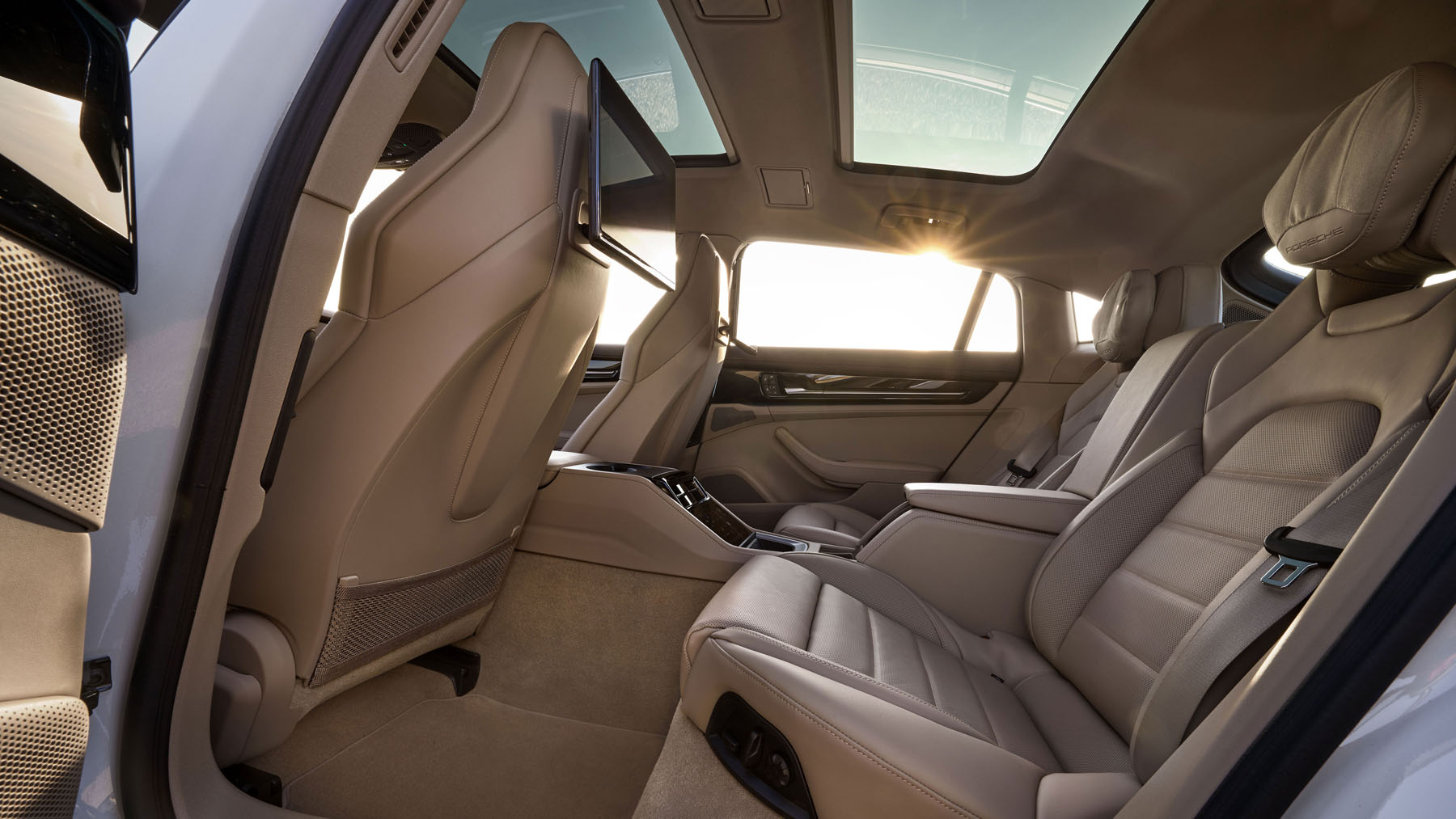
The chassis also allows for new features – it automatically reduces pitching and rolling in all the driving modes. The body, therefore, remains horizontal. It also adapts wheel load distribution to the degree of available grip and lowers the chassis when corners are taken in a spirited manner in Sport Plus mode. The result is greater traction in all situations. At the touch of a button, the innovative chassis can do more than offset body movements. The Panamera then leans into the corner like a motorcycle. Or it leans forward when accelerating and back when braking like a helicopter to make the situation more comfortable. The system can additionally raise the body to make it easier for passengers to get in and out.
Freedom of movement for ample comfort
The new suspension’s construction is not comparable to a regular chassis. Stabilizer bars usually stiffen the axle to reduce vehicle rolling. But Porsche has done away with this in Porsche Active Ride. This allows the Panamera to absorb a road bump at, for example, the front left without transferring the motion to the body or the front right strut.
This affords the engineers greater scope for comfort. But rolling motion does have to be absorbed elsewhere. In a regular chassis, the dampers absorb the body vibrations. But the active dampers of the new chassis can do more – the system stabilizes the vehicle by controlling the wheels individually. For example, a wheel can be rapidly applied to the road or withdrawn into the wheel well. To this end, each damper features an electrically operated hydraulic pump that pushes hydraulic oil around a cycle in the damper under high pressure to manage compression and rebound actively. The control system uses sensors to determine how the damper should respond. These analyze wheel and body acceleration as well as body and spring motion. In contrast to camera-based systems, this works in all visibility and road conditions.
More efficient air suspension
The system is certainly fast enough – it has a control frequency of 13 hertz, meaning up to 13 adjustments are made per second. “With this kind of design, we theoretically don’t need a spring anymore,” says Albers. The system could assume the spring’s role of absorbing shocks. However, this would be very energy-intensive, so the chassis features a single-chamber air spring. This is even lighter and more efficient than the dual-chamber air spring of the standard chassis.
Porsche Active Ride requires a high-performance power source. In the new Panamera Turbo E-Hybrid, this is provided by a 400-volt high-voltage battery. The technology is therefore not an option for purely combustion engine–powered versions. A version for all-electric vehicles has already been developed and will be gradually rolled out in future Porsche sports cars.
Photo © 2024 Dr. Ing. h.c. F. Porsche AG


